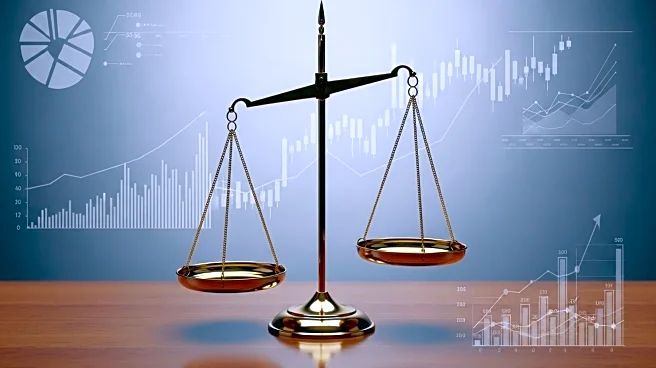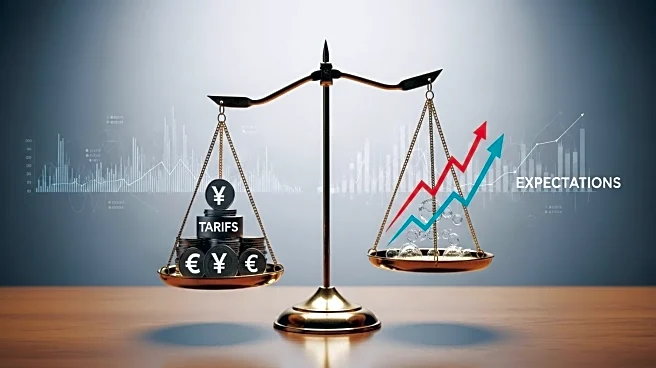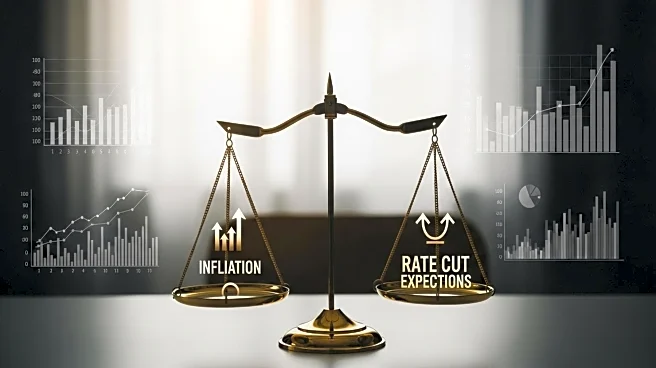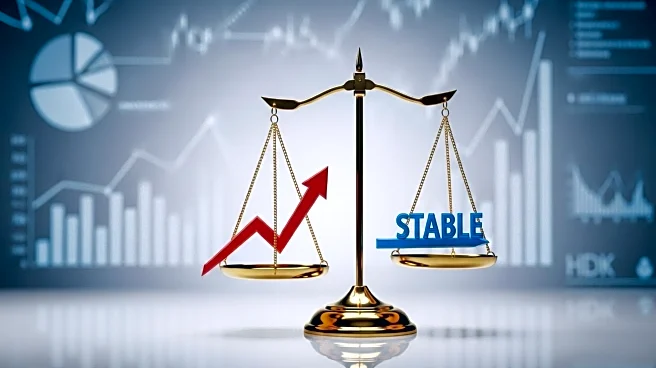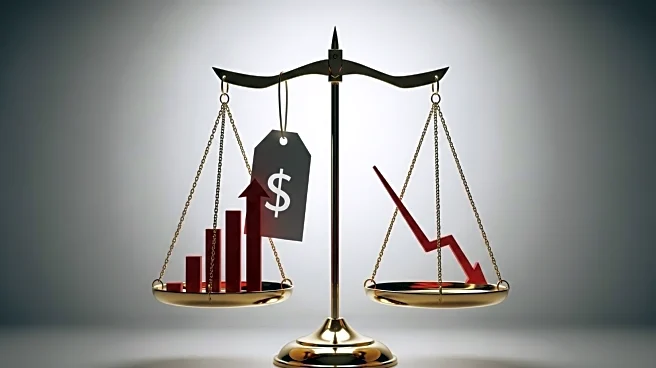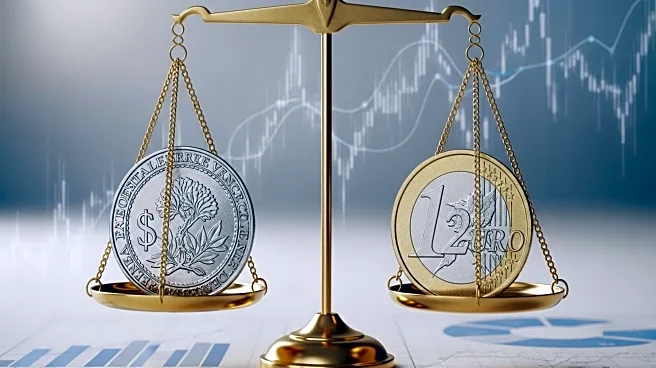What is the story about?
What's Happening?
The Federal Reserve is grappling with a complex economic situation as core PCE inflation reached 2.9% in July 2025, marking the highest level since February and surpassing the Fed's 2% target. This inflationary pressure is largely driven by services inflation and tariffs imposed during President Trump's administration, affecting steel, aluminum, and semiconductors. These tariffs have led to increased costs for manufacturers and consumers, with construction costs rising by 25% and delays in energy transition projects due to levies on solar and wind components. Despite these inflationary challenges, the market anticipates an 87% chance of a 25-basis-point rate cut in September, reflecting a paradox between inflation concerns and expectations for monetary easing.
Why It's Important?
The current inflation scenario poses significant implications for U.S. economic policy and market dynamics. The persistent inflation, exacerbated by tariffs, presents a long-term challenge for the Federal Reserve's dual mandate of stable prices and maximum employment. The tariffs are projected to reduce long-run GDP by 6% and wages by 5%, complicating the Fed's ability to balance inflation control with economic growth. Investors are responding to these uncertainties by reallocating assets, favoring industries less affected by tariffs, such as cybersecurity and defense. This shift highlights a broader trend towards intangible-asset-heavy industries and onshoring-driven equities, as seen in major investments by companies like Apple and Johnson & Johnson.
What's Next?
The Federal Reserve's upcoming decisions will be crucial in navigating the tension between short-term monetary policy expectations and long-term structural shifts caused by tariffs. While the market is optimistic about a rate cut, the Fed's cautious approach suggests that any easing will be incremental. Equity valuations, particularly in sectors exposed to tariffs, are likely to remain volatile until there is clarity on the inflation trajectory. The Fed's ability to reconcile its inflation-fighting resolve with the realities of a globalized economy reshaped by protectionism will be pivotal in determining the path forward.
Beyond the Headlines
The inflationary pressures and tariff impacts underscore deeper economic shifts, including the structural changes in global trade dynamics. The tariffs reflect a move towards protectionism, which could have lasting effects on international trade relations and domestic economic policies. The Fed's challenge in balancing inflation control with economic growth highlights the complexities of managing an economy influenced by both cyclical and structural factors. The ongoing adjustments in investment strategies and industry focus may lead to long-term shifts in the U.S. economic landscape.
AI Generated Content
Do you find this article useful?
